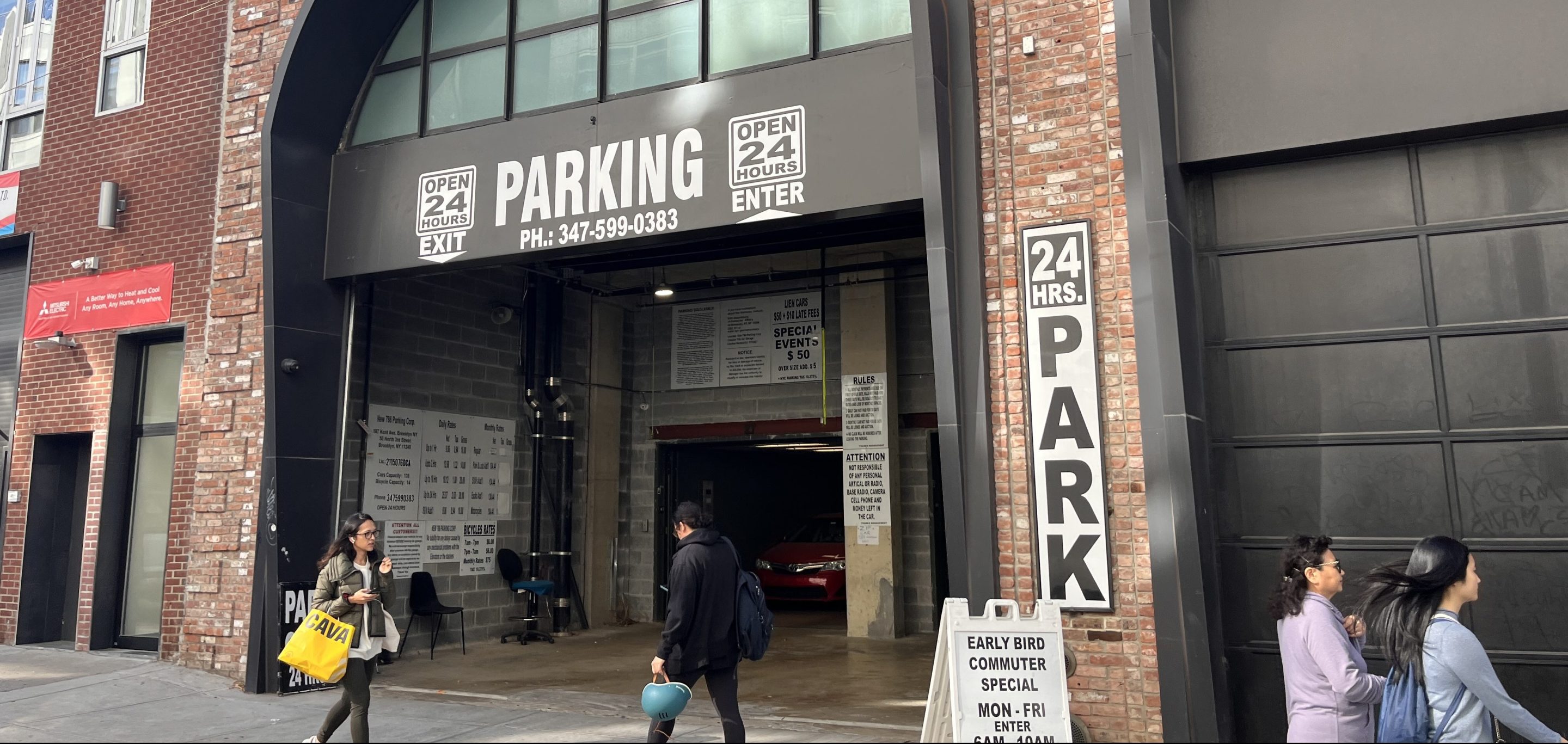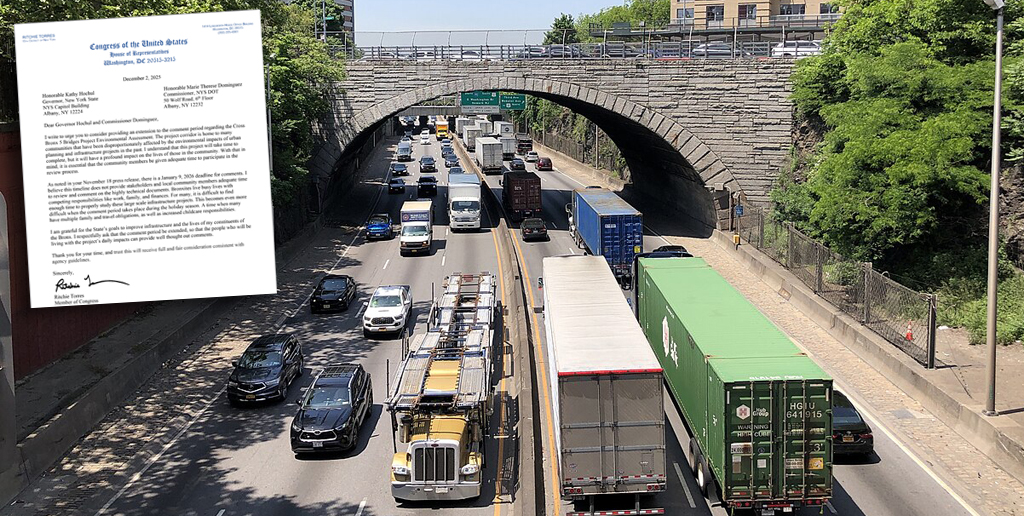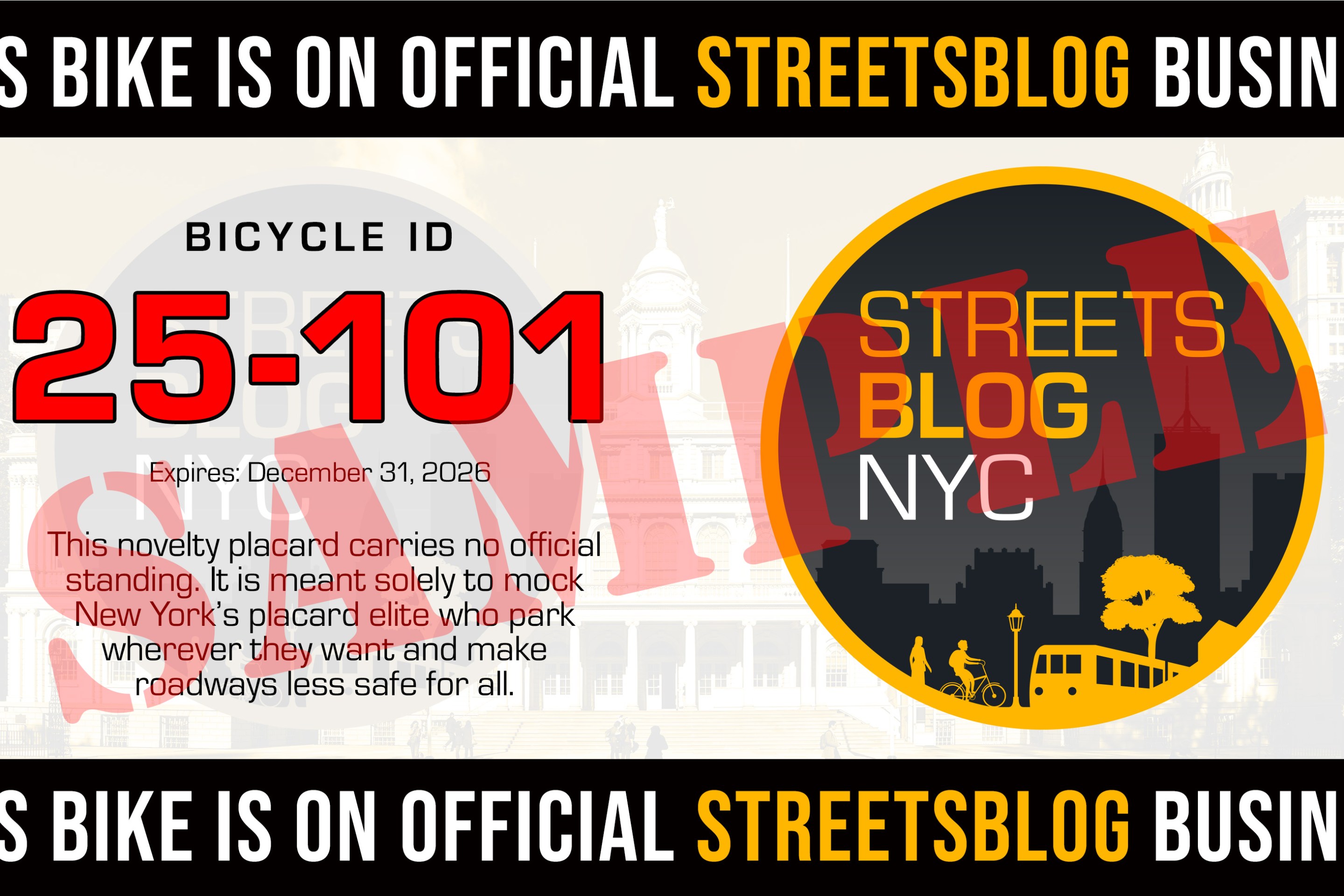Parking is more than half the story here.
Experts now estimate that Mayor Adams's landmark City of Yes rezoning plan will generate 50 percent fewer new units if the City Council modifies the plan to eliminate mandatory parking within half a mile of subway stations instead of everywhere citywide.
The Adams administration says the unamended plan — now before the Council — would spur the development of 58,000 to 109,000 new units over the next 15 years. But some members of the Council have discussed limiting the elimination of parking mandates to within half a mile of the subway, also known as "the transit zone," as well as redefining the "transit zone" to not include commuter rail stations.
If those things happen, you can cut City Hall's numbers in half.
“If the Council modifies the plan to eliminate parking requirements only in the transit zone — and the scale of the transit zone is reduced to not include commuter rail — that would cut the estimated production in about half,” said Marcel Negret, a the director of land use at the Regional Plan Association, who has authored multiple reports analyzing the plan’s possible outcomes.
The Council is expected to vote before the end of the year. In two long days of hearings members from low-density districts doubled down on their skepticism about removing parking mandates citywide, and expanding the "transit zone," which are key to making other parts of the plan work.
By the numbers
Accessory dwelling units, “transit oriented" development, and “town center zoning" are crucial elements of City of Yes that would be most affected by fiddling with parking mandates or the definition of "transit zone." These proposals are meant to boost what the city calls "missing middle" housing, or three- to five-story buildings in low density districts, a typology that already exists, but has been impossible to build since zoning changed in 1961.
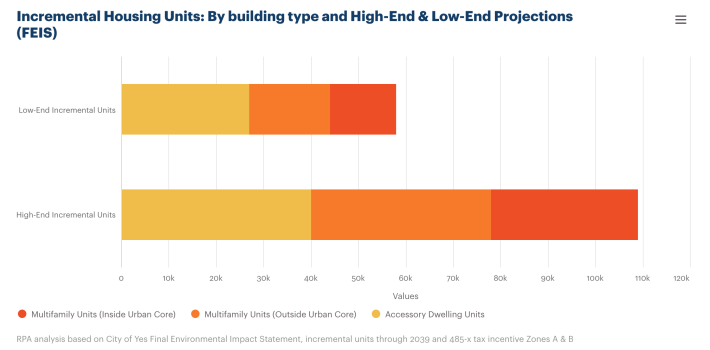
The Environmental Impact Statement estimates that if accessory dwelling units are legalized, 27,000 to 40,000 will be built in the next 15 years. But if the Council requires those units outside the "transit zone" to have on-site parking, that number would drop by 80 to 90 percent. (Consider the likelihood that a homeowner will convert an existing freestanding garage into two units of housing if she then has to tear up the little leftover patio for two parking spaces.)
“It's an obvious impossibility to impose that parking requirement [on accessory dwelling units] and imposing that requirement was a way of preventing the additions,” said Howard Slatkin, the executive director of the Citizens Housing & Planning Council, and a former Planning Department official.
In addition, the City of Yes is expected to bring 17,050 to 37,950 multifamily units to areas outside of the urban core, mostly through “transit oriented development” and “town center zoning.” Negret said half of the potential three- to five-story buildings in low-density areas won't get built if the Council waters down the plan by not expanding the "transit zone" to include Long Island Rail Road, Metro North, and Staten Island Railway stations.
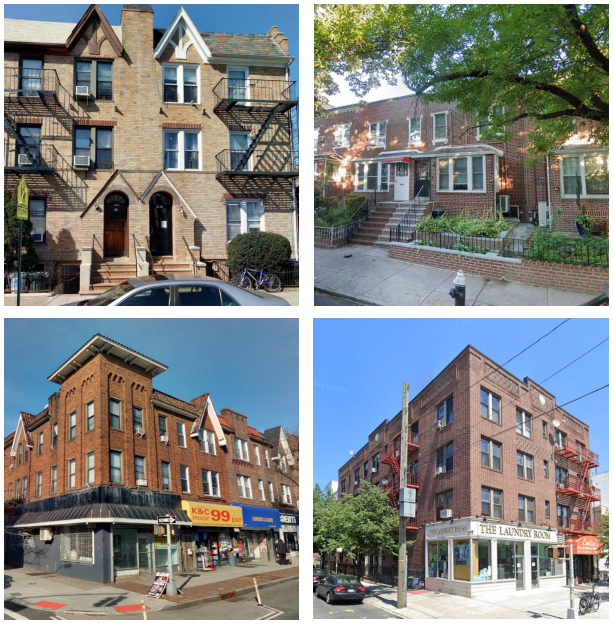
And without removing parking mandates outside the "transit zone," many of the lots where "town center zoning" would be an option would no longer be feasible for development, potentially reducing projected unit production by a little more than half.
“A lot of the potential development sites are outside the transit zone,” said Negret. “Those also could typically be on smaller lots or midsize parcels. If you're requiring parking on a small- or mid-sized parcel with only about 10 units, then that doesn’t make it viable.”
Even high-density proposals would be affected. That portion of the estimated units, 13,950 to 31,050, could drop by as much as 20 percent because parking mandates would make infill projects more difficult and costly.
So in addition to a plan that creates half as many units, a weakened City of Yes would end up building housing in the same areas that have been pulling the weight for the last 10 years.
“It’s not just the total number. The idea that you’re 'building a little bit more housing in every neighborhood,' becomes less true,” said Negret. “If you eliminate [accessory dwelling units, transit oriented development, and town center zoning] from the overall stock, the bulk of the new stock will still be largely concentrated in the same neighborhoods that we’ve seen, and part of the idea of City of Yes is to ‘spread the love.’”
More housing ... everywhere?
And the mantra, "A little more housing everywhere," is the centerpiece of Mayor Adams's housing goal. And it's not as if it's a radical idea. Other cities such as Buffalo (in 2017), San Francisco (2018), Minneapolis (2021) and Boston and Cambridge (2022) have eliminated parking minimums, which removed parking requirements for all new buildings, not just those containing residential or affordable housing.
Yet opposition to this simple idea — a little more housing — was very much on display during a six-hour hearing before a Council committee last month, where conservative Council members derided City of Yes as a "one-size-fits-all" idea.
“I’m sorry ... but your district needs to be part of the housing solution in New York City, this is important," City Planning Commission Chairman Dan Garodnick retorted to Council Member Bob Holden (D-Queens). "You cannot opt-out, you cannot just say ‘no.'"
“We could opt-out,” said Holden.
“Your district has to be a part of the solution,” replied Garodnick.
“No it doesn’t,” snapped Holden, who has been one of the harshest critics of the plan.
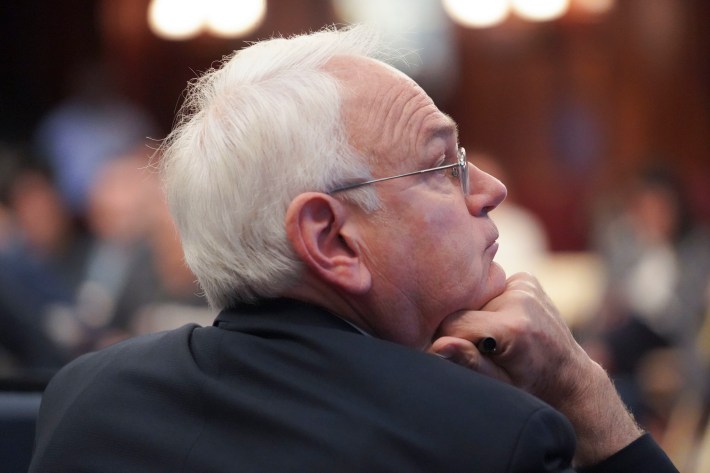
Holden's contempt for development is shared by fellow members of the conservative “Common Sense Caucus," including Vickie Paladino (R-Queens), Kristy Marmorato (R-Bronx), Joann Ariola (R-Queens), David Carr (R-Staten Island) and Joe Borelli (R-Staten Island), who have criticized removing parking mandates.
Council members more to the left, who may support some aspects of the plan, have also zeroed in on parking as a necessary compromise, ignoring the expert consensus that removing parking mandates is needed to make the plan effective in its goals.
Council members Rafael Salamanca (D-Bronx), Selvena Brooks-Powers (D-Queens), Eric Dinowitz (D-Bronx), Mercedes Narcisse (D-Brooklyn), and Linda Lee (D-Queens) all questioned the need to remove parking mandates citywide, continuing the narrative that removing parking requirements would harm residents in “transit deserts.”
Experts say this concern ignores the larger issues and follows a historical pattern of using parking to prevent development. (See video below):
“It's impossible to disentangle [parking and housing], because over the years, parking requirements have been used as a way to prevent the addition of housing. It's hard for me to say which one is any individual's top concern. Whether or not it’s their core motivation to prevent housing, [people who want to keep mandates] obviously are not troubled by it,” said Slatkin.
What's next?
Council Speaker Adrienne Adams released her own proposal last week, but has not yet revealed where she stands on parking mandates and the expansion of the “transit zone.”
There are a lot of possibilities between removing parking mandates citywide, and keeping them as they are today. But any change to the City of Yes proposal’s parking mandate point will inevitably result in less housing.
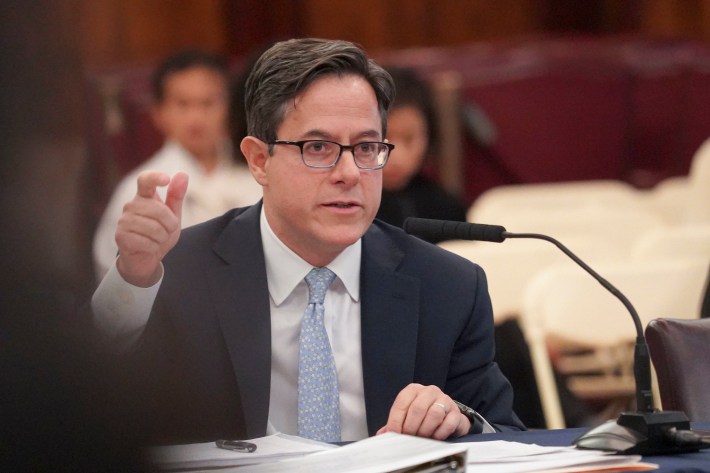
“With a 1.4-percent vacancy rate and a housing crisis that has been decades in the making, inaction is not an option and every home makes a difference. We continue to engage with the City Council to achieve our shared goals of addressing the housing crisis and ensuring every neighborhood is a part of our housing growth, and we’re hopeful that they will approve the strongest possible final package,” Garodnick told Streetsblog in a statement.
In other words, there is a little wiggle room for negotiation to get the plan over the finish line.
“Is there something between eliminating all parking requirements and leaving things the way they are? Yeah, but it's a very delicate matter,” said Slatkin. "Leaving in place parking requirements can really negate everything else in the proposal if it's not done in a very thoughtful way."
